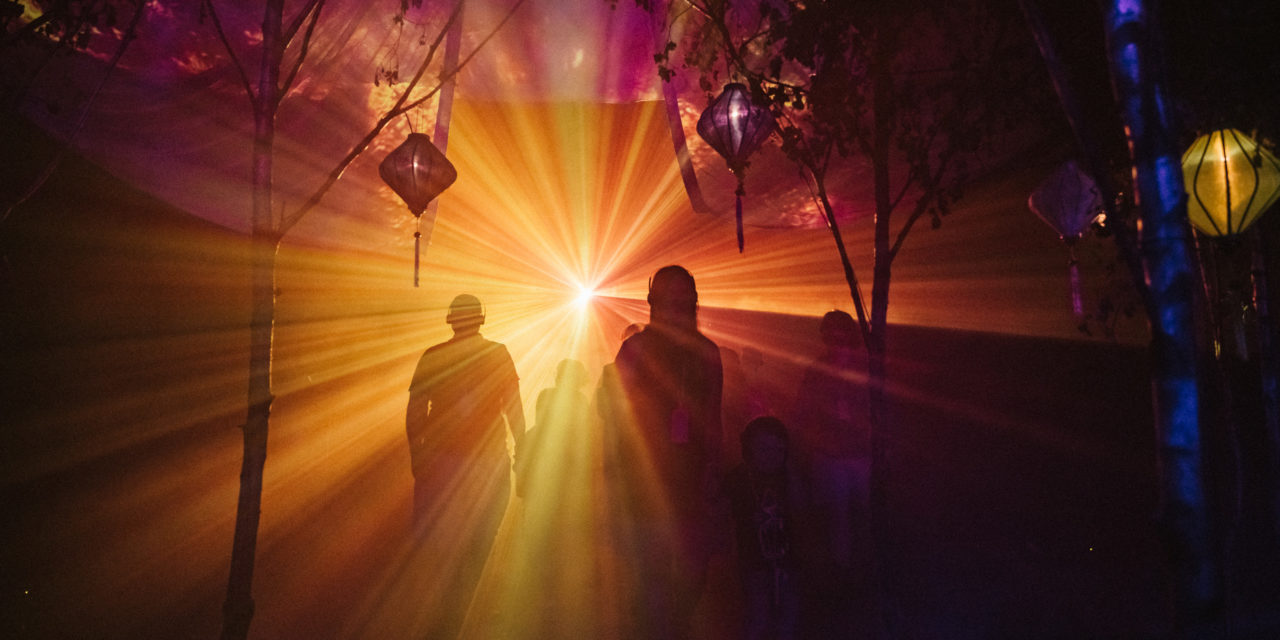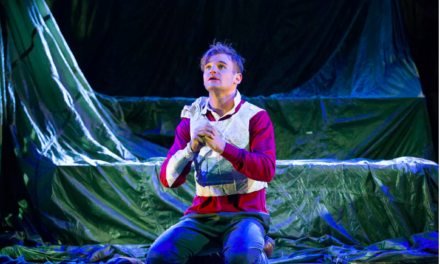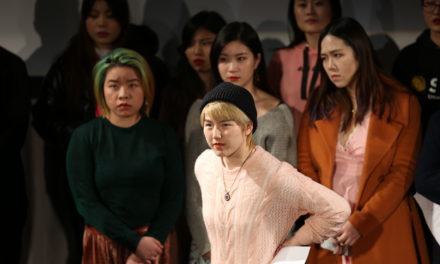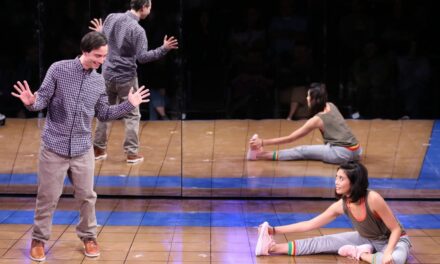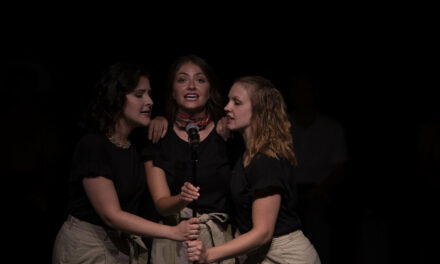“It’s time for a dance with a funky hippo, walk in a dark prehistoric wasteland, seek out the fairies in an enchanted forest. If you dare, sneak into the Sorcerer’s lair and experience the eerie majesty of the Bald Mountain.”
The Vaults Production of Sounds And Sorcery evokes the unforgettable images of Fantasia. The 40s animation movie was quite a unique project:
“Not really a concert, not a vaudeville or a revue, but a grand mixture of comedy, fantasy, ballet, drama, impressionism, colour, sound, and epic fury.”
Adapting such a genre-breaking source material offers incredible opportunities in the realm of immersive theatre.
Almost eighty years later the release of Fantasia, Sounds And Sorcery celebrates the iconic movie in an immersive production with ground-breaking technology. The production hopes to enthrall “young and old; original fans and those who have never seen the film.” The Vaults, famous for immersive and site-specific productions, and Fantasia together seemed like an enchanting mixture. But Sounds And Sorcery did not fulfill all these expectations. It did, however, provide interesting questions about spectator freedom, immersive dramaturgy, and how theatre differs from art installations.
Daisy Evans, director of Sounds And Sorcery, warns this is not an adaptation. They took Fantasia as inspiration but wanted to create something that could stand on its own. Fantasia has no plot, but in a revolutionary way, the viewer is engaged by the exquisite experience of entering into image-rich worlds. When Evans and her team decided to take on this project, they had some ideas of how it would work. She explains,
“I wanted to create different worlds you can walk in and out of because in the original Disney film each piece is so different. So, it allowed me to think about them as different pieces of art rather than different performances.”
This idea materialized as rooms, each of them representing a world based on one of the classical music pieces in the movie.
The music plays directly in your ears through a headset, a technique Evans has explored before in her work as founder and Artistic Director of Silent Opera. The binaural technology is that of Complicité’s The Encounter, which effectively envelops the listener in an evocative soundscape. It is quite a noteworthy device that can enhance the experience of immersion. Each individual is both aware of the other audience members but detached enough to have their own experience. As Evans describes,
“You are free inside of the headsets. When you put on the headphones, it adds a layer of magic.”
Evans recognizes another source of magic came from the freedom of the spectators to choose their own path.
“I didn’t want to be too prescriptive with audiences. I think there is more magic in discovering things for yourself.”
In this way, each room was not contiguous, but separate entities that could be accessed from a common “neutral” area. The timings of when the rooms reset (that is, the music playing started anew) were displayed, just like shows in a theme park. It was, actually, meant to represent a musical theme park.
“We wanted to make sure that it felt like a musical theme park, where you could choose what rides to go on to and revisit those you wanted to.”
A provocative idea–what is the dramaturgy of a theme park? What is the theatrical arc of a ride?
Walt Disney revolutionized the way we told stories but he can also be considered one of the fathers of immersiveness thanks to his vision of Disneyland. When he had already revolutionized storytelling in film, Disney dreamed of Magic Kingdom, a new approach to amusement parks. Instead of being a collection of rides, Disneyland focused on the creation of other worlds, as Walt Disney put it “worlds of yesterday, tomorrow, and fantasy.” Guests came to Disneyland not to go on rides, but to experience the magic of the worlds Disney had created.
In the “music theme park” of Sounds And Sorcery, each time you enter one of the rooms, the music in your headsets changes to one of the classical pieces, and you are transported to a different world. Some of the rooms involve performers, such as the Sorcerer’s Lair or the Dance of the Hours, and some are design-based, with the world changing according to the music. At this point is where the line between art installation and theatre becomes blurry. For instance, in the Nutcracker room, you walk through an enchanted forest with lights and projections that respond to the music playing in your headsets. It is a stunning landscape, with details that will delight the fans of the Disney movie. However, there are no performers. Many times, theatre’s unique quality has been noted to be the energy exchange between performer and audience, but when there is no performer, is there still an energy flow? How does this room differ from a Sound and Light show or from an exhibition in Tate Modern?
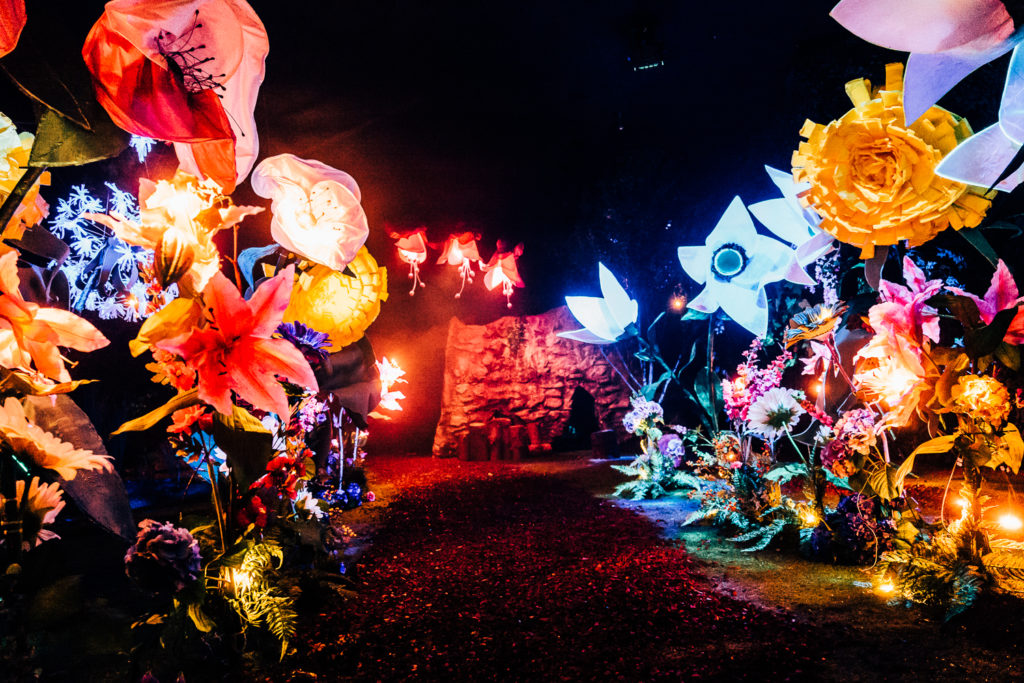
Nutcracker Suite featuring human-sized plant life in The Vaults presents Sounds And Sorcery Celebrating Disney Fantasia. Credit: Hanson Leatherby.jpg
Evans acknowledges there is a real crossover between installation art and theatre, and that she pondered about the difference often during the production. For her, the separating line between the two media lies on where the focus is placed,
“Our focus is not ‘look at this flower’, for example. Our focus is ‘experience all these things together’, and that makes a piece of theatre because it’s not about an object; it’s about how the light changes, and the music, and the objects, and the audience, and how it all comes together and that is theatre, as opposed to art.”
For Evans, the essential emphasis of theatre resides on the sum of experiences instead of the object. And while the distinction might not convince everybody, it does show that in the modern concept of immersive productions, art installations and theatre merge.
Surprisingly, Evans’ definition seems to parallel what made Disneyland a revolutionary place: what mattered was the overall experience, not the experience of the rides. And yet, in its attempt to be a musical theme park, Sounds And Sorcery lacks the warmth of a theatre production. The key is in the dramaturgy of the event: what is the tension that keeps the audience engaged? Evans’ goal was to allow audiences the freedom to become the protagonists of their journey, allowing them to come in and out of the rooms as they pleased, taking pictures of the set. But there is no dramatic tension in open choice, and the preciousness of the live moment vanishes when you can take pictures of the theatrical world for your Instagram account. Nothing felt “live,” as even the music was not live. The few live performances that happened during Sounds And Sorcery were all comedic, tightly choreographed in a way that felt the performers were just bodies in a gorgeously designed space.
Disney created the wondrous worlds of Fantasia and Disneyland. There is a quote that seems to be relevant to this conclusion:
“You can design and create, and build the most wonderful place in the world. But it takes people to make the dream a reality.”
He probably meant collaborators and producers, but we should never forget the value of performers in order to create a believable, live, theatrical world.
Sounds And Sorcery Celebrating Disney Fantasia is on until September 30, 2018, at the Vaults, London. www.soundsandsorcery.com / 0207 401 9603
This post was written by the author in their personal capacity.The opinions expressed in this article are the author’s own and do not reflect the view of The Theatre Times, their staff or collaborators.
This post was written by Aida Rocci Ruiz.
The views expressed here belong to the author and do not necessarily reflect our views and opinions.

